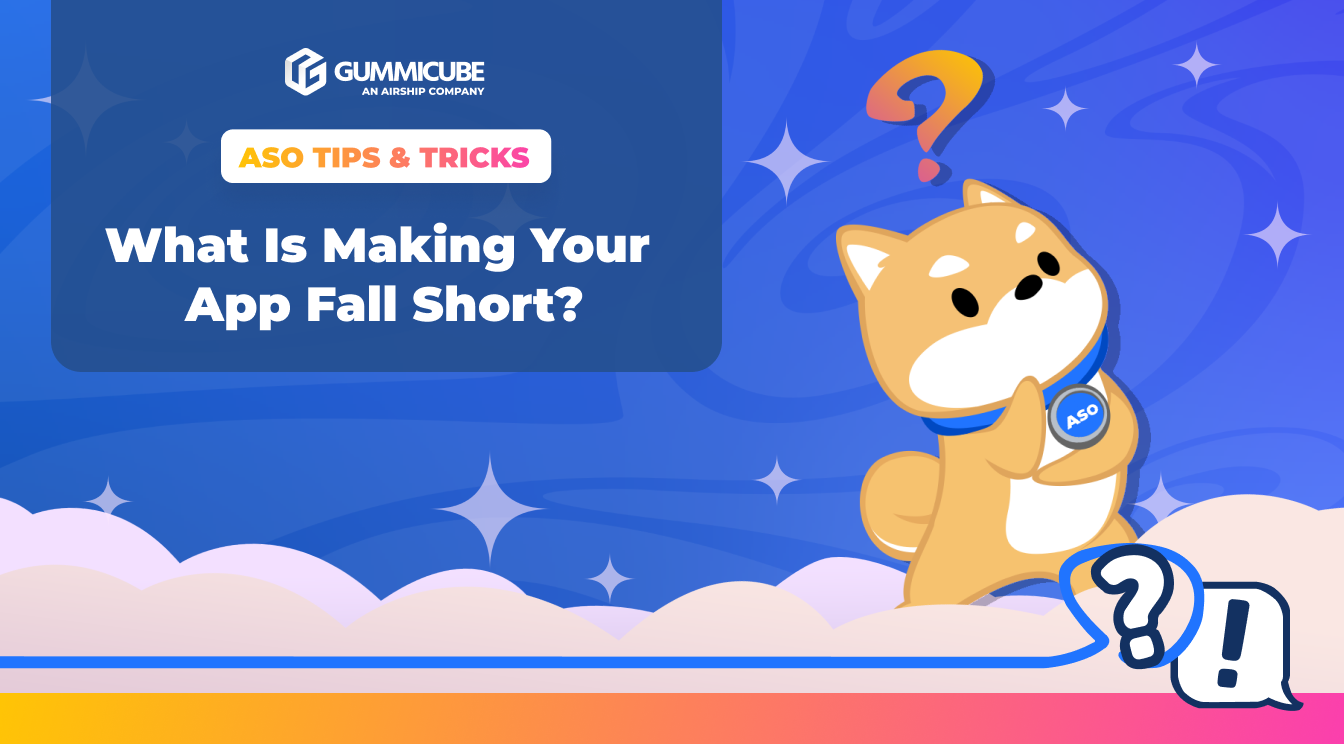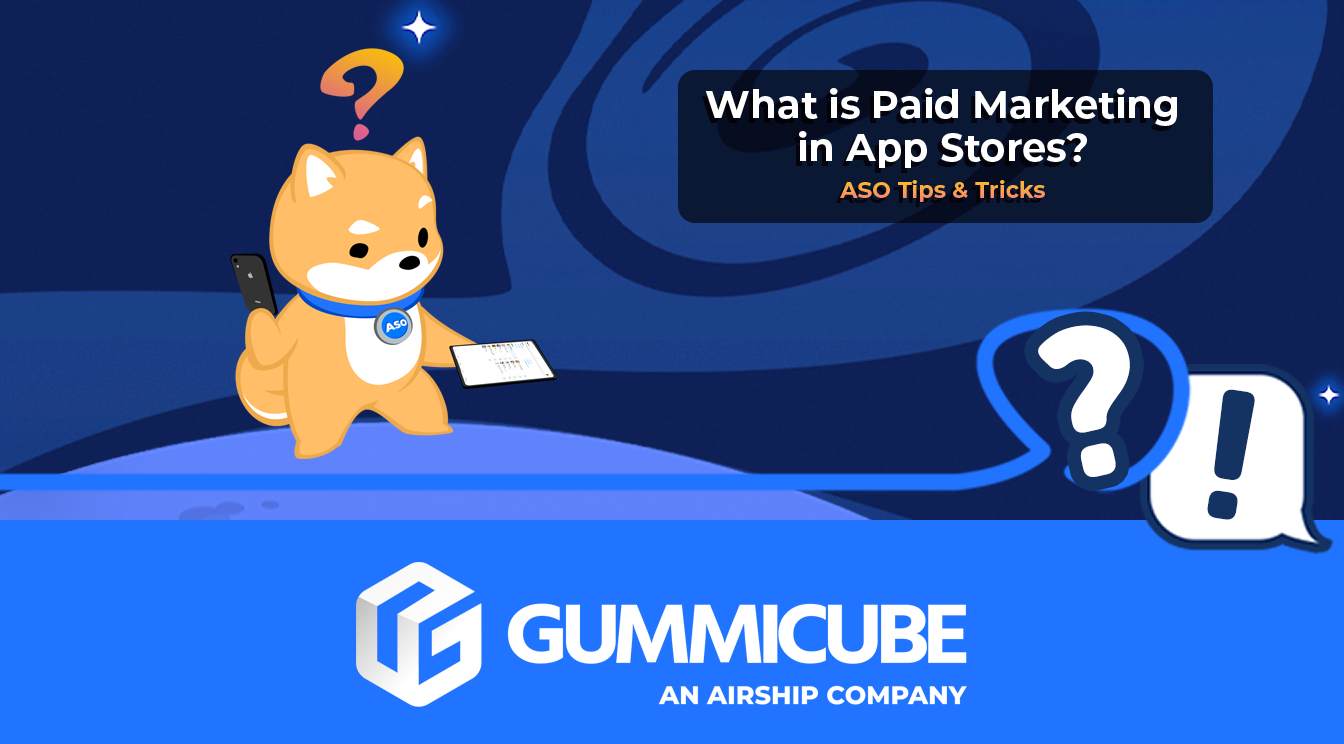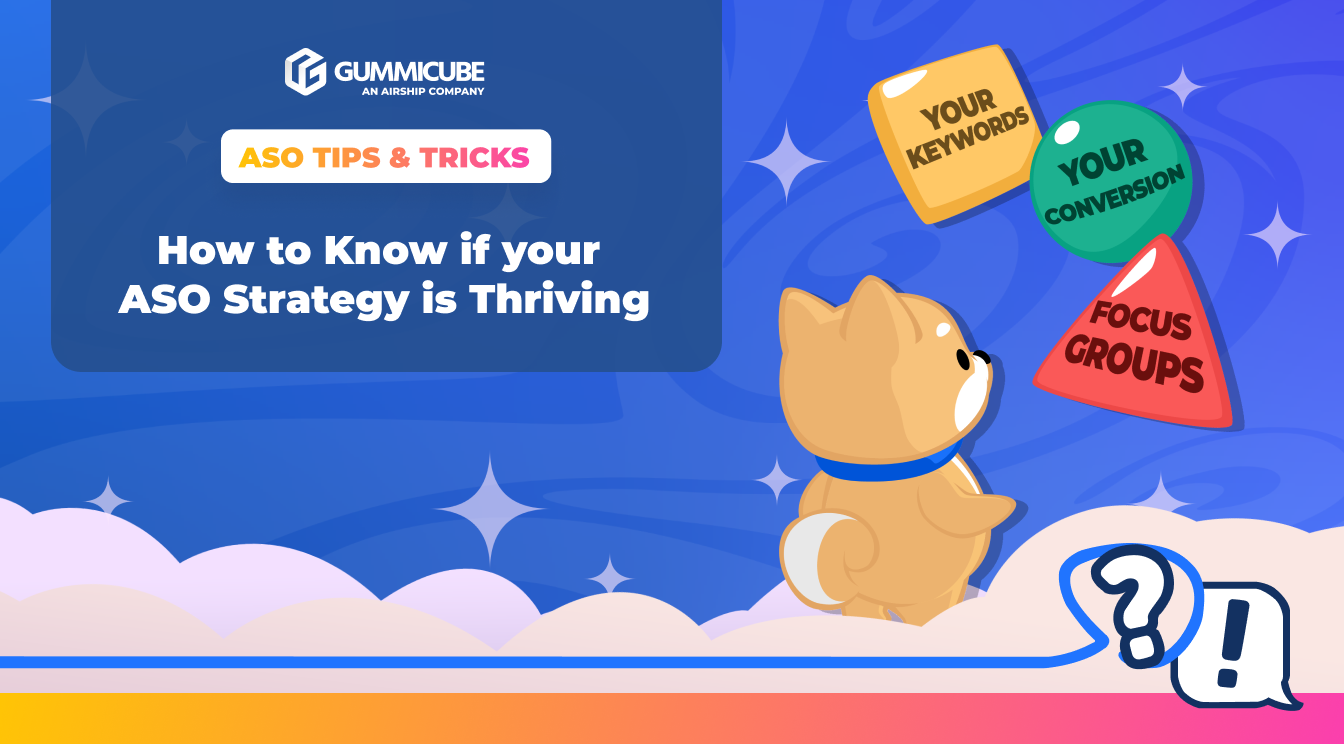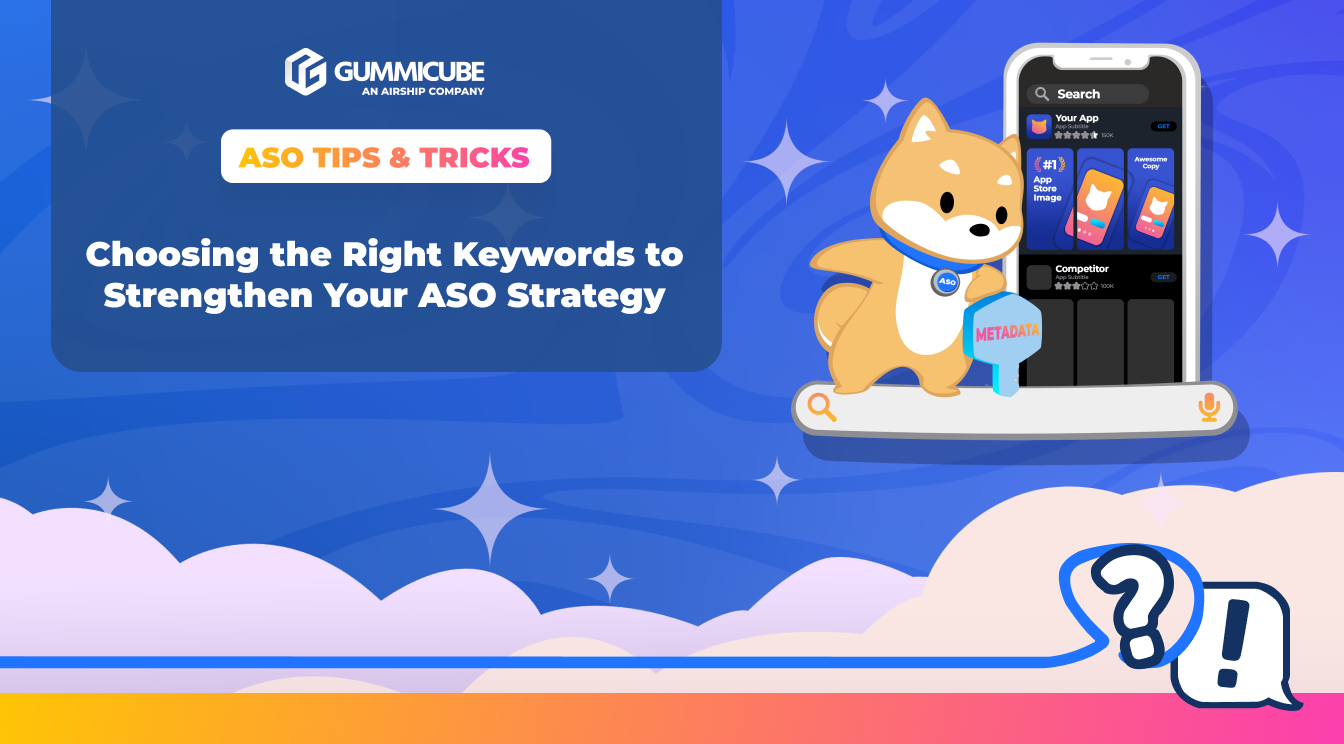
What Is Making Your App Fall Short?
Posted on November 26th, 2025
App seasonality is one of the most powerful and most overlooked opportunities in ASO. Ignoring it means missing moments when users are searching most actively.

App discoverability is one of the most important challenges developers face. With millions of apps available across the Apple App Store and Google Play, relying on organic growth alone is rarely enough. App Store Optimization (ASO) lays the foundation for discoverability, but to scale visibility faster and more predictably, paid marketing becomes essential.
Paid marketing campaigns in app stores help bridge the gap between organic visibility and user acquisition goals. When executed properly, they place your app in front of high-intent users during key discovery moments. But to be effective, these campaigns must be designed with ASO in mind—from the keywords you target to the creative assets you showcase.
This week’s ASO Tips and Tricks breaks down how paid search supports ASO, how to use paid campaign insights to guide organic strategy, and which tools can help maximize the return on both. The goal is to help you build a more efficient, data-backed strategy that fuels sustained growth.
By combining paid marketing with ASO best practices, app developers can drive higher visibility at a lower cost and create a strategy for steady app growth.
Apple’s App Store offers premium real estate for app promotion, and with Apple Ads Advanced, developers can tap directly into high-traffic areas where user attention is strongest. These placements do more than just create visibility—they can reinforce your app’s position in a user’s mind, support seasonal promotions, and complement your organic rankings.
Understanding the role each placement plays within the user journey is key. Whether it’s the first screen a user sees when they open the App Store or the last page they browse before making a download decision, every impression counts. Apple Ads Advanced empowers you to put your app in the right place at the right time.
ASO tools, like DATACUBE, can give you the insight to target the keywords where you have the most relevance to generate traffic. This kind of data-driven guidance helps optimize your Apple Ads campaigns by focusing spend on the highest-performing keywords, maximizing your return on investment.
Apple Ads Advanced (formerly Apple Search Ads) gives app developers precise control over ad placements throughout the App Store. These ads appear at key moments in the user journey, helping you reach potential users when they are most receptive. Keep in mind that some app categories may have restrictions based on Apple’s policies and regional rules.
Here are the four main ad placements available through Apple Ads Advanced:
Ads on the Today tab appear on the App Store’s front page, one of the highest visibility spots available. This placement is ideal for promoting major updates or seasonal campaigns. Because it’s the first screen users see, it offers a powerful way to set your app up to be seen by a larger audience and potentially drive higher app installs.
Search tab ads appear above the suggested apps before users start typing a keyword. This placement targets users with strong intent and offers a chance to capture attention early, before competitors come into view after pressing “search.”
This placement shows ads at the top of search results triggered by specific keywords. It is the most popular ad placement and works best when paired with a solid ASO strategy. Paid ads here can complement organic rankings, helping to potentially increase both visibility and app conversion rates.
Product page ads show at the bottom of other app pages within the store while users are browsing. These ads target users browsing related or competitive apps, helping you to potentially capture user interest and encourage exploration of your app.
Each ad placement serves a different goal, from raising awareness to driving app installs. The key to setting your app up for success is aligning paid keyword targeting with your organic ASO efforts to maximize relevance and performance.
When used correctly, Apple’s paid ad placements do more than just boost installs—they act as an extension of your overall ASO strategy. Each ad type plays a unique role in reaching users at different stages of their search and discovery experience. By aligning your metadata, creative assets, and keyword targeting across both paid and organic channels, you can create a unified experience that drives more qualified downloads.
It is also important to track performance across these placements and continuously optimize based on install trends, keyword performance, and user engagement. A well-balanced approach that leverages Today Tab visibility, Search placements, and Product Page opportunities can position your app more competitively, especially during high-volume periods like holidays or app update cycles.
While Google App Campaigns are often associated with Google’s broader ecosystem, their presence within the Play Store itself plays a crucial role in boosting app discoverability. These placements are not always top of mind for developers focused on ASO, but they should be. Google’s machine learning-driven system can surface your app to users who are actively browsing, searching, and considering their next download—making it a natural fit for ASO integration.
Whether your goal is to grow in an emerging market or push a new feature update, leveraging in-store paid placements can dramatically shorten the time it takes to gain traction. This section explains how Google App Campaigns work inside the Play Store and why a combined ASO and paid strategy leads to better long-term outcomes.
For app developers looking to improve their app’s visibility on Google Play, Google App Campaigns offer direct access to prime in-store placements. While these campaigns also run across the broader Google ecosystem, including YouTube, Search, and the Display Network, their value within the Play Store itself should not be overlooked. These placements reach users at critical decision-making moments when interest is high and install intent is strong.
Your ads can appear in several impactful areas within the Play Store, including:
These placements allow your app to compete for visibility in high-traffic areas without relying solely on organic rankings. For developers in competitive categories, this added exposure can make a substantial difference in acquisition volume and quality.
To start a campaign, app developers can sign in to Google Ads, create a new campaign, and select App promotion as the campaign goal. From there, you choose your Android app, decide whether the campaign focuses on app installs or engagement, and upload creative assets such as text, videos, and images. Google’s systems then automatically generate and serve ads across available placements, including inside the Play Store, optimizing for performance and cost-efficiency based on your set budget and goals.
These campaigns work best when supported by a data-driven ASO strategy and regularly updated Google Play Store listing. This includes strong app creative, well-structured metadata, and a user experience that is engaging to potentially improve conversion rates. Paid app visibility can drive traffic, but converting that traffic requires a strong foundation. App developers who align their paid campaigns with their ASO strategy could see more consistent returns and potentially higher long-term value from each install.
App Installs require thoughtful preparation, from keyword targeting in your metadata to visuals that clearly convey value. Without these core ASO elements in place, even a well-funded campaign may fall short. By integrating App Campaigns with your ASO strategy, you are setting up your app to attract the right users. Those who are more likely to install, engage, and return.
Peak periods, such as the launch of a new app version or entry into a new geography, are excellent times to leverage these campaigns. They can help build early momentum, drive downloads, and reinforce your app’s relevance in crowded categories.
The most effective strategy is one where paid and organic efforts work in tandem. Paid ads can bring in traffic, but it’s your ASO that convinces users to download. Conversely, a strong ASO strategy can lower your cost per acquisition by improving your app’s relevance to the keywords and categories you target through paid search.
Whether you are running Apple Ads, Google App Campaigns, or both, make sure you are always learning from your results. Every impression, click, and install offers insight into user behavior and market demand. Implement this data to regularly update your app’s metadata, strengthen your creative, and fine-tune your keywords in order to better reach your target audience.
Understanding your app’s keyword relevance, user behavior trends, and conversion performance allows you to refine your paid strategy in support of long-term growth. If you rely solely on paid campaigns without a strong ASO framework, you risk attracting users who do not convert or retain. On the other hand, if you rely exclusively on organic tactics, you may miss out on moments where paid visibility can help your app break through.
The most successful app developers approach paid marketing as a natural extension of their ASO strategy. With the right creative assets, performance insights, and campaign structure, you can set your app up to unlock more valuable placements and reach users with stronger intent.
Ready to take your ASO strategy up a notch and get smarter with paid search? Gummicube’s ASO services are here to support you every step of the way. From optimizing your keywords and metadata to aligning your app store listing with your ad campaigns, we help you find the right approach to try and attract more of the users you want.
Paid marketing and ASO work best when they’re in sync, and with the right guidance, you can find new ways to reach your ideal users while making the most of your budget. Get in touch to take the next step toward an ASO strategy focused on long-term growth.

App seasonality is one of the most powerful and most overlooked opportunities in ASO. Ignoring it means missing moments when users are searching most actively.

ASO measurement is defined by the alignment and progress across all KPIs that influence visibility, relevance, and user engagement. Read more now!

A successful keyword strategy requires regular evaluation & strategy. Read more to see how choosing the right app keywords can transform your app listing!